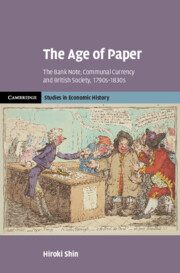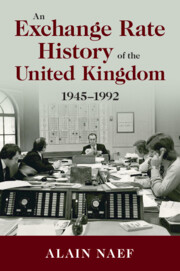Refine search
Actions for selected content:
37 results
2 - Morgan and Bank Reserves
-
- Book:
- Before the Fed
- Published online:
- 16 October 2025
- Print publication:
- 30 October 2025, pp 13-26
-
- Chapter
- Export citation
2 - Value in Motion: The Inheritance of Merchant Capital and Debates over Credit
-
- Book:
- The Capitalist Self
- Published online:
- 12 October 2025
- Print publication:
- 30 October 2025, pp 57-100
-
- Chapter
- Export citation
10 - Panic of 1907
-
- Book:
- Before the Fed
- Published online:
- 16 October 2025
- Print publication:
- 30 October 2025, pp 163-174
-
- Chapter
- Export citation
Introduction
-
- Book:
- The City's Defense
- Published online:
- 09 October 2025
- Print publication:
- 23 October 2025, pp 1-26
-
- Chapter
- Export citation

The City's Defense
- The Bank of England and the Remaking of Economic Governance, 1914–1939
-
- Published online:
- 09 October 2025
- Print publication:
- 23 October 2025
16 - We Must Not Fool Ourselves Now (August 21–September 17)
-
- Book:
- There Will Be the Devil to Pay
- Published online:
- 21 December 2024
- Print publication:
- 09 January 2025, pp 307-324
-
- Chapter
- Export citation
9 - Where and How to Place? (June 8–June 13)
-
- Book:
- There Will Be the Devil to Pay
- Published online:
- 21 December 2024
- Print publication:
- 09 January 2025, pp 148-162
-
- Chapter
- Export citation
2 - Central Bankers and Their World
-
- Book:
- There Will Be the Devil to Pay
- Published online:
- 21 December 2024
- Print publication:
- 09 January 2025, pp 22-46
-
- Chapter
- Export citation
17 - As for the Future of England (September 16–October 23)
-
- Book:
- There Will Be the Devil to Pay
- Published online:
- 21 December 2024
- Print publication:
- 09 January 2025, pp 325-341
-
- Chapter
- Export citation
Introduction
-
- Book:
- The Age of Paper
- Published online:
- 19 December 2024
- Print publication:
- 02 January 2025, pp 1-27
-
- Chapter
- Export citation

The Age of Paper
- The Bank Note, Communal Currency and British Society, 1790s–1830s
-
- Published online:
- 19 December 2024
- Print publication:
- 02 January 2025
1 - The Moneychanger State
-
- Book:
- Money, Value, and the State
- Published online:
- 05 December 2024
- Print publication:
- 12 December 2024, pp 51-91
-
- Chapter
- Export citation
PUBLIC CONFIDENCE IN THE BANK OF ENGLAND
-
- Journal:
- National Institute Economic Review / Volume 269 / Autumn 2024
- Published online by Cambridge University Press:
- 23 January 2025, pp. 47-69
- Print publication:
- Autumn 2024
-
- Article
-
- You have access
- Open access
- HTML
- Export citation
9 - The Bank’s Place in Central Bank History
-
- Book:
- How a Ledger Became a Central Bank
- Published online:
- 16 November 2023
- Print publication:
- 30 November 2023, pp 243-270
-
- Chapter
- Export citation
13 - Central Banks in the British Dominions in the Interwar Period
- from Part II - Specific
-
-
- Book:
- The Spread of the Modern Central Bank and Global Cooperation
- Published online:
- 02 November 2023
- Print publication:
- 16 November 2023, pp 352-382
-
- Chapter
- Export citation
8 - Cooperation and the Fed Swap Network
-
- Book:
- An Exchange Rate History of the United Kingdom
- Published online:
- 23 September 2022
- Print publication:
- 29 September 2022, pp 115-126
-
- Chapter
-
- You have access
- Open access
- HTML
- Export citation
11 - The Consequences of the Devaluation
-
- Book:
- An Exchange Rate History of the United Kingdom
- Published online:
- 23 September 2022
- Print publication:
- 29 September 2022, pp 166-179
-
- Chapter
-
- You have access
- Open access
- HTML
- Export citation
Introduction
-
- Book:
- An Exchange Rate History of the United Kingdom
- Published online:
- 23 September 2022
- Print publication:
- 29 September 2022, pp 1-4
-
- Chapter
-
- You have access
- Open access
- HTML
- Export citation

An Exchange Rate History of the United Kingdom
- 1945–1992
-
- Published online:
- 23 September 2022
- Print publication:
- 29 September 2022
-
- Book
-
- You have access
- Open access
- Export citation
6 - The Panic of 1825 and the Systematization of Impunity
- from Part III - Preface
-
- Book:
- Impunity and Capitalism
- Published online:
- 08 September 2022
- Print publication:
- 15 September 2022, pp 219-259
-
- Chapter
- Export citation
